Artificial intelligence emerged as a way to mimic human behavior and streamline various tasks. It has become a recognized ally in customer service, marketing, sales, etc. We’re already used to talking to intelligent robots in customer support or communicating with them on social media or e-commerce websites.
8 Ways AI Can Benefit Designers
- Enhanced creativity
- Increased efficiency
- Improved accuracy
- Better personalization
- Access to new materials, textures and styles
- Cost-effectiveness
- Better decision-making
- Increased speed-to-market
Take one of the recent developments in AI — ChatGPT and its alternatives. These AI-powered systems can interact with people in a human-like manner, generate ideas and texts, write code or create images and videos. The potential for AI is enormous, even though it’s still in its infancy and learning steadily. But did you know AI can transform UX design?
User experience (UX) is what you feel while using a website, mobile application or other device. UX designers aim to ensure a user experience that will encourage visitors to become clients or brand loyalists.
As customer expectations grow, leveraging AI capabilities can give designers a leg up on the competition.
3 Ways AI Can Improve the User Experience
Why do businesses need to introduce AI in UX design? AI can improve the life of UX designers in various spheres, whether it’s e-commerce website redesign, mobile application development or even chatbot creation. Let’s consider three AI benefits below.
Personalization
Personalization is one of the most powerful methods to improve website metrics, such as a conversion rate, page views, and clicks. It boosts ROI for 89 percent of marketers and encourages repeat sales for 60 percent of consumers. However, personalization works thanks to data. How can you process it effectively? The answer is artificial intelligence.
AI can personalize the UX design based on details like user behavior, demographics, and interests. You can use it to assist you with the following tasks:
- Building intelligent user interfaces to meet client needs
- Delivering the most relevant information to the intended users
- Spotting trends and predicting user preferences
Automating Everyday Tasks
UX designers have to perform various repetitive tasks requiring attention but little brain power. These tasks don’t involve inventing anything or thinking through the perfect design. All designers have to do is check various formats or fill out forms. The good news is that it’s easy to automate such steps. AI makes designers’ jobs more productive by handling their monotonous duties. For example, AI-powered tools can do the following:
- Resize images
- Remove background
- Correct colors
- Suggest matching color palettes
- Crop files
Advanced technologies can do it without human involvement, freeing up precious working time. For instance, designers can stitch together images using Adobe’s stitch feature to recognize picture patterns.
Identifying Behavior Patterns
The idea of collecting data has existed for some time already. Designers, marketers and developers should understand their target market to launch a user-friendly and relevant solution and satisfy business needs. However, delivering insights from the gathered data is one of the complex tasks here. But AI can also support you in that.
AI enables businesses to improve how they gather and analyze data, leading to deeper insights and more deliberate decisions. How? AI and machine learning (ML) systems progress with time. They can learn to identify patterns to collect, analyze, and interpret user data, reducing time for UX research.
Here is an illustration of AI in use. You can employ AI to draft surveys for gathering user data. Afterward, specialized software, such as an OCR program, comes into play to examine the information. AI can even learn how to react to user input when analyzing qualitative data, which is another impressive capability.
How AI Helps Build a UX Process
Even if you don’t want to get a handle on complex AI solutions, you can still improve your UX design process with simple tools like ChatGPT. In this section, we’ll examine a few ways to use them to your advantage.
Creating a UX Persona
The first way to leverage AI is to create a user persona. It’s for whom you develop the website or app. You need to design such a persona to understand the main characteristics of your target audience to meet their expectations. ChatGPT can draft a proto-persona, a preliminary version of a UX persona. It’s helpful initially, as you don’t possess enough user data.
Here is how it may look:
researching the Competition
It’s difficult to outpace competitors without knowing their proposition. That’s why competitor research is so essential for UX designers. But this process can be time-consuming, and you may easily miss something when analyzing other websites/apps. That’s where ChatGPT can help again.
ChatGPT can’t distinguish between features with the same functionality but different names. So first you need to standardize elements to utilize this tool for competitor analysis. You can do it with tools like GetApp. Here you can compare up to four competitors:
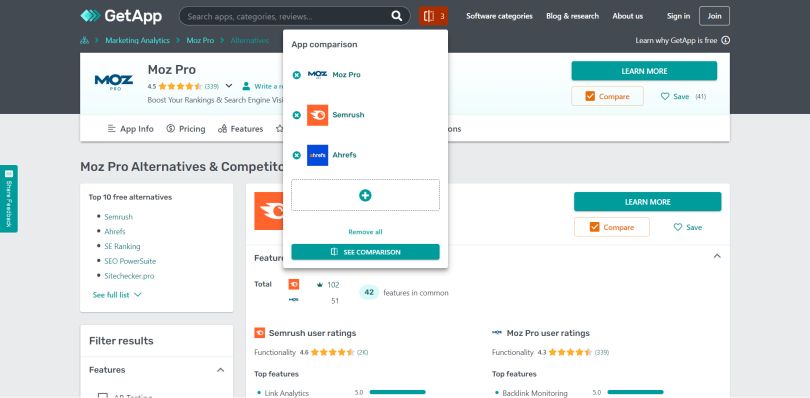
Here is how the comparison page may look:
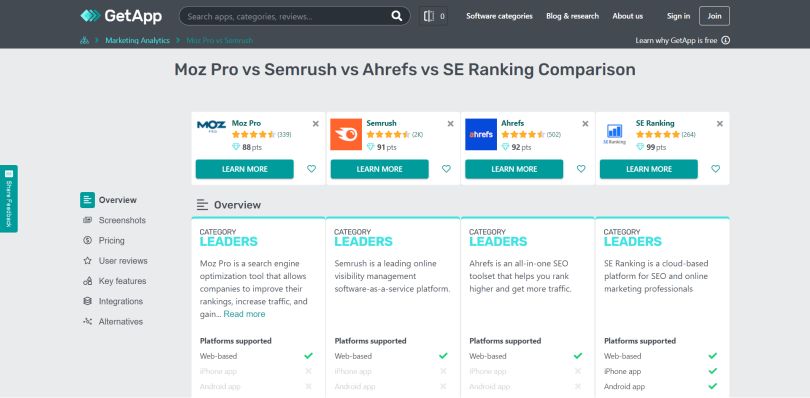
Below is an example of how to ask ChatGPT to analyze features, conduct a SWOT analysis, and present the results as a table.
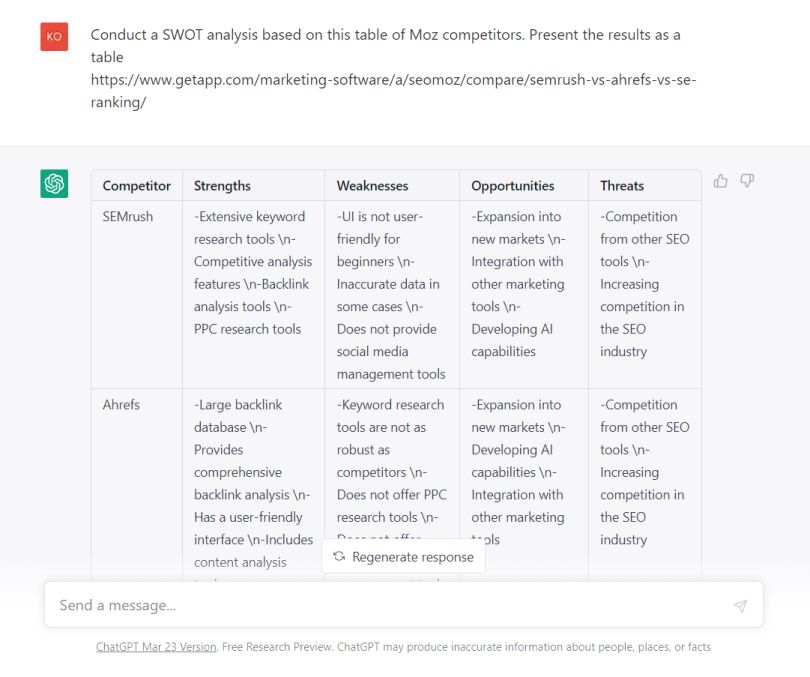
Generating Mood Boards and Icons
Another famous AI tool, Midjourney, may seem more appropriate for image creation and a helper for an illustrator. Yet, it can assist UX designers too. Note that the vendor has closed free access to the software due to increased demand, so you need to purchase it.
Midjourney may assist in creating mood boards to portray the vibe you want your app to have and come up with a solution that everyone will like. The best part is that the process may take minutes. All you have to do is type in a particular prompt or upload a user interface sample as a guide and get various options.
The tool can also provide you with numerous original icons. Specify the desired style for Midjourney to follow and give as specific instructions as possible to control the AI output.
Drafting Copy
You may use the tried and tested lorem ipsum copy. However, AI can help you better visualize your design and present even early prototypes to the client. The screenshot below shows that AI solutions like Copy.ai can produce impressive text content examples.
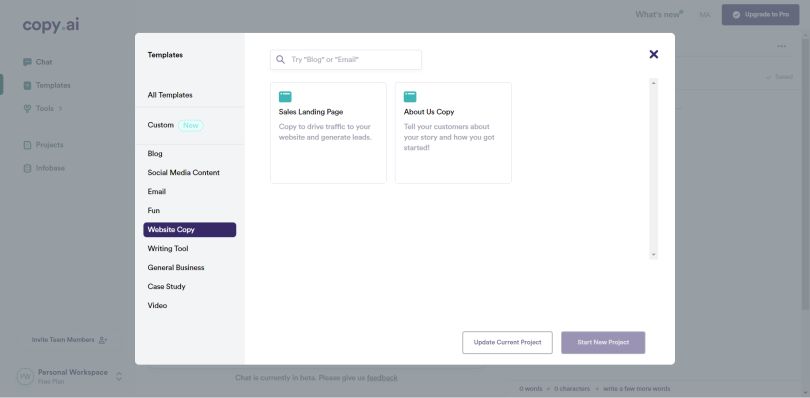
DESIGN System Documentation
You can develop design system documentation much more quickly with various tools, such as Figma, Zero-Height and Supernova, and AI technologies like ChatGPT. Describe your needs in detail to get the result, as in the screenshot below.
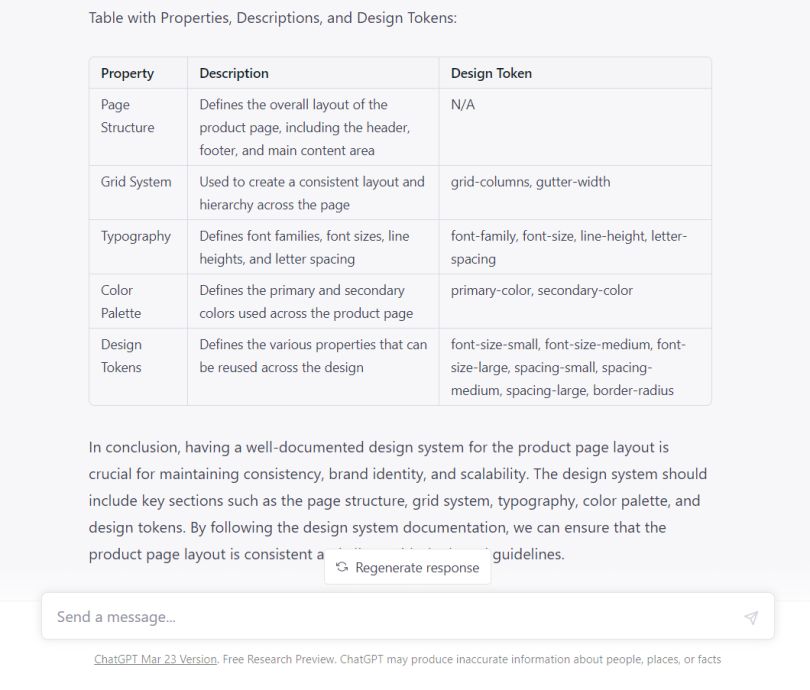
AI in UX Design: Limitations
The negative effects of AI are just as great as their positive ones. But if you know what to expect from AI, you may prepare for these situations and mitigate them more effectively. Let’s look at the existing challenges of integrating AI into UX design.
Storing and Protecting User Data
The first concern about using AI revolves around privacy and security. While data collection has been a common practice, modern users have become savvy about their data usage.
What does AI have to do with these fears? AI takes data analysis to a higher level, processing more sensitive, precise consumer information. It increases the chances of misusing or stealing data.
As disruptive technologies like AI achieve more widespread commercial acceptance, the need for new data protection regulation increases. UX designers have to protect users by using data properly and offering levels of privacy.
Bias and Discrimination
Bias and discrimination provide another difficulty for AI in UX design. As the algorithm takes the existing base to make decisions, it may lead to unwanted results. Suppose the data in the system is prejudiced against particular groups. AI may make discriminatory conclusions or recommendations without thinking they may be offensive to someone. As AI can’t think, UX designers should check the training data sets and test algorithms for bias.
information sources
AI is effective at generating content. We’ve already seen it in the examples of ChatGPT and other content writers. But have you thought about the source of their texts? The systems extract information from what their developers or users feed them. The same applies to UX design cases.
AI can find the best-performing option, predict the next customers’ steps or input data. But these capabilities rely on previous experience. If you need to come up with innovative ideas, you may only ask AI for advice. And you should be mindful of what you get from the system. AI can’t tell whether the current information is wrong, outdated, or incomplete, returning an untrustworthy answer.
AI and Design: Final Thoughts
Customers demand change and progress. They influence how companies plan communication strategies, attract and retain clients, and design websites/apps. AI is an indispensable part of today’s daily operations, and it can also help with UX design.
AI can process vast amounts of data, learn from past decisions to improve future outcomes and find patterns in customer behavior. You can spot any potential issues before they arise, predict trends for business growth, and more.
Yet it’s not a total replacement for humans. AI is far from perfect now, although it learns from interactions with people. If you want to provide better services and products, you need to employ the power of the human mind and AI automation together. Minimize possible AI drawbacks with the help of human intervention and watch productivity skyrocket and the number of dissatisfied clients plummet.





